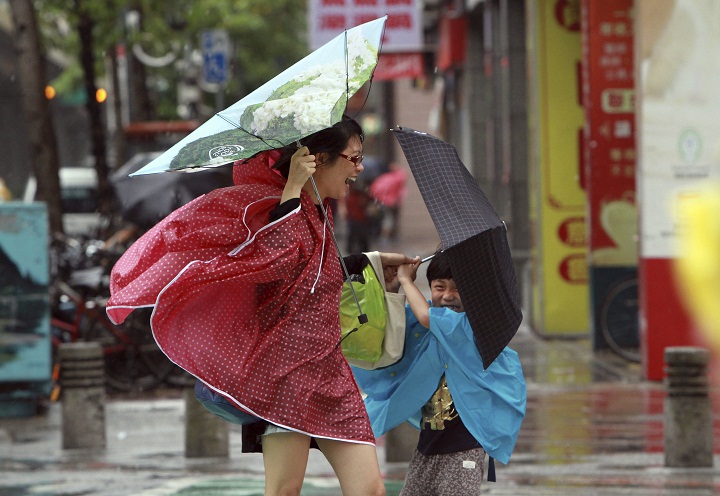TAIPEI, Taiwan – The most powerful typhoon of the year swept through the Luzon Strait separating the Philippines and Taiwan on Saturday, battering island communities and dumping rain as it eyed landfall in Hong Kong.

Typhoon Usagi had maximum sustained winds of 222 kilometres per hour (139 miles per hour) and gusts exceeding 260 kph (163 mph) Saturday morning, and was 550 kilometres (342 miles) south of Taipei, Taiwan’s capital, according to the U.S. Navy’s Joint Typhoon Warning Center.
Taiwan’s Central Weather Bureau said Usagi was veering west, likely sparing southern Taiwan from the most destructive winds near its eye.
But gusts exceeding 230 kph (144 mph) were recorded on the Taiwan island of Lanyu, and the bureau warned that dangerous winds were buffeting the holiday resort of Kending on the Hengchun peninsula as the storm makes its closest approach to the area.
In the Philippines, Usagi triggered landslides and power outages in parts of the north of the country, including the Batanes island group, where it made landfall early Saturday. No casualties have been reported.
The government’s weather bureau warned that storm surges and heavy waves could cause damage in the Batanes and other islands in the Luzon Strait before Usagi blows past the Philippines on Saturday night.
- ‘Shock and disbelief’ after Manitoba school trustee’s Indigenous comments
- ‘Super lice’ are becoming more resistant to chemical shampoos. What to use instead
- Is home ownership only for the rich now? 80% say yes in new poll
- Invasive strep: ‘Don’t wait’ to seek care, N.S. woman warns on long road to recovery
China’s National Meteorological Center announced a red alert, its highest level, as the storm maintained its track toward Hong Kong and the manufacturing heartland of the Pearl River Delta. The observatory warned that Usagi would impact coastal areas of Guangdong, Zhejiang and Fujian provinces.
The Hong Kong Observatory said early Saturday evening that Usagi was 650 kilometres (406 miles) east-southeast of the city. It said the storm’s maximum sustained winds would weaken to 165 kph (103 mph) by 2 p.m. Sunday on approach to Hong Kong before making landfall overnight. The observatory was maintaining a No. 1 Standby Signal and warned that the storm poses a “severe threat” to the city.
In Taiwan, nearly 2,500 people were evacuated from flood-prone areas and remote mountainous regions as the government deployed military personnel into potential disaster zones. The storm system has dumped more than 200 millimeters (8 inches) of rain along the eastern and southern coasts in a 13-hour period, with officials warning that a total rainfall of 1,000 millimeters (39 inches) could drop before the storm leaves Sunday.
Local officials closed mountain highways blocked by landslides and suspended train services connecting the east and west coasts as power outages affected thousands of homes.
Usagi has a massive diameter of 1,100 kilometres (680 miles), with its outer rain bands extending across Luzon and all of Taiwan across to the Chinese coast. Taiwan’s Central Weather Bureau warned winds of 100 kph (63 mph) could hit Taipei.
The Office of Civil Defence in Manila said landslides damaged houses and roads, and pockets of power outages were reported in at least five northern provinces, where several roads and bridges were impassable.
Cathay Pacific Airways and Dragonair said flights Saturday were unaffected except for one cancelled flight, but both airlines warned of delays and cancellations at Hong Kong International Airport from Sunday evening to Monday morning, and urged passengers to postpone nonessential travel on those two days.



Comments